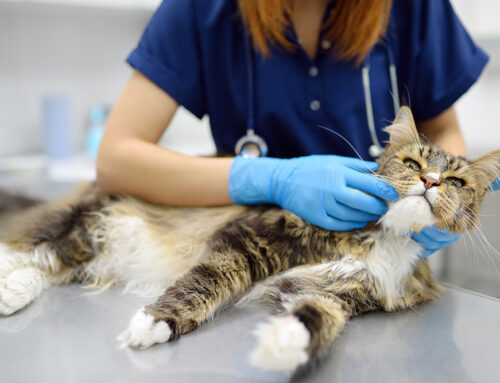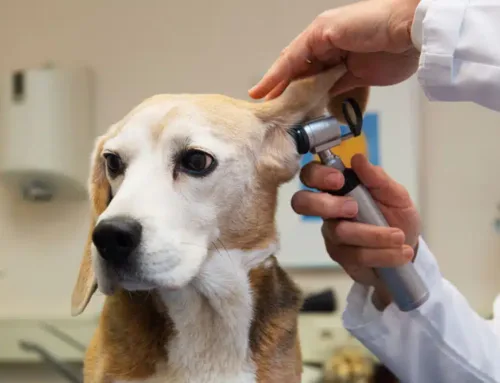Foxtails in California: Small Seeds, Big Problems for Pets
A playful romp through tall grass or a curious sniff along a fence line can seem harmless. But in California, these moments often expose pets to one of the most underestimated dangers: foxtails, also known as grass awns. These sharp, barbed seeds don’t just cling to fur: they burrow deeper with every step, shake, or scratch, carrying bacteria into sensitive tissues.
At Cupertino Animal Hospital, our team has seen firsthand how foxtails can turn a simple walk into a medical emergency. With advanced diagnostics, endoscopy, and specialized ear care, we’re equipped to find and remove these hidden invaders before they cause lasting damage.
The Nature of a Foxtail
Foxtails are the barbed seed heads of wild grasses common across California. Their one-way design allows them to move forward but never back out, which means they rarely work themselves free. Dogs bounding through fields and cats brushing along overgrown fences can pick them up in seconds.
What looks like a small seed can quickly escalate into abscesses, infections, or organ damage if not addressed quickly.
Why These Seeds Cause So Much Trouble
Unlike splinters, foxtails don’t sit still. They continue migrating deeper into the body, dragging bacteria with them. Depending on where they lodge, they can cause:
- Painful skin abscesses or draining tracts
- Chronic ear infections that don’t respond to standard treatment
- Corneal ulcers or vision loss if lodged in the eye
- Severe respiratory infections if inhaled
- Internal organ damage if they reach the chest or abdomen
Because they keep moving, the longer a foxtail remains in place, the more complicated and costly the treatment becomes.
The Ear Problem: Why Cupertino is an Expert in Foxtails
Ears are one of the most common and dangerous entry points for foxtails. Seeds that land in the hair around the ear can quickly work their way into the canal. From there, they may puncture the eardrum (tympanic membrane) and continue into the middle or inner ear.
As they migrate, foxtails drag bacteria deep into delicate ear structures, creating infections that can become chronic or even spread to nearby bones. Pets may show intense head shaking, pawing at the ear, or sudden pain, but in some cases, the signs are subtle until the infection has taken hold.
At Cupertino Animal Hospital, our Pet Ear Care Center is dedicated to diagnosing and treating these difficult cases. Using advanced video endoscopy, we can visualize deep into the canal, locate hidden foxtails, and show owners exactly what is happening inside their pet’s ear. When necessary, surgical expertise allows us to remove seeds that have migrated beyond the canal and repair damage caused by infection or rupture.
Other Places Foxtails Hide
While ears are a top concern, foxtails can burrow almost anywhere, including:
- Nose: violent sneezing fits, nasal discharge, pawing at the face
- Eyes: redness, tearing, squinting, or swelling
- Between the toes: constant licking, swelling, painful abscesses
- Under the skin: firm lumps or oozing wounds that may erupt far from the entry point
Foxtails can even migrate silently until they cause draining wounds in unexpected locations. This makes veterinary imaging and thorough searches essential.
Hidden Clues That Point to Trouble
Foxtail injuries don’t always look obvious. Watch for:
- Sudden limping or refusal to bear weight
- Persistent head tilt or shaking
- Sneezing or coughing without another cause
- Small wounds that refuse to heal
- Swellings with no clear injury
Because foxtails keep moving forward, waiting can allow them to reach deeper tissue where removal becomes far more invasive. If you notice these signs, same-day care is best.
How Our Team Finds and Treats Foxtails
Foxtail removal is not something to attempt at home. Their barbed design makes them nearly impossible to extract fully without specialized tools. At Cupertino Animal Hospital, treatment may include:
- Comprehensive physical and ear exam
- Sedation to allow a safe, pain-free search
- Diagnostic imaging such as ultrasound or CT scans for deeper seeds
- Endoscopy for precise visualization inside the ear canal, nose, or airway
- Surgery when seeds have migrated into tissue or caused complications
- Tailored ear treatments for infections and inflammation
Because foxtails often cause infection, antibiotics and pain relief are standard. Recheck exams are just as important as the initial procedure, since foxtails might not be found right away, or multiple seeds may be present. Monitoring ensures healing and prevents new abscesses from forming.
Smart Prevention for California Pets
While foxtails are everywhere, consistent habits reduce the risk:
- Stick to short, mowed trails instead of tall fields
- Inspect paws, ears, eyes, and nose after every outing
- Keep fur trimmed around ears and feet
- Regular grooming helps long-haired breeds avoid hidden seeds
- Consider protective gear like Outfox hoods or booties for active dogs
Prevention is never perfect, but regular inspection after outdoor play often catches seeds before they cause trouble.
Answers to Common Foxtail Questions
Do foxtails ever work their way out?
No. Their barbs only move forward.
Are cats safe from foxtails?
Not always. Outdoor cats, especially long-haired ones, are still at risk.
Why are ears such a concern?
Foxtails can migrate from the outer ear into the canal, puncture the eardrum, and reach deeper structures while dragging bacteria with them.
Can foxtails cause long-term damage?
Yes. They can rupture eardrums, cause blindness, or damage internal organs.
Why are rechecks necessary?
Because foxtails can be missed the first time or break apart, monitoring ensures complete healing.
Keeping Outdoor Adventures Safe
Foxtails are small, but they have the power to cause weeks of pain, infection, or even lasting damage if left untreated. The best protection is a combination of prevention at home and fast veterinary care when warning signs appear.
At Cupertino Animal Hospital, our team has the tools and experience to find and remove foxtails before they create bigger problems. With advanced diagnostics, minimally invasive endoscopy, and specialized ear care, we focus on resolving the immediate problem and preventing long-term complications.
If you spot sudden limping, pawing at the face, head shaking, or squinting eyes, don’t wait to see if it improves. Contact us today for an evaluation. Quick action makes all the difference in keeping your pet comfortable, healthy, and ready for their next safe adventure.
















Leave A Comment